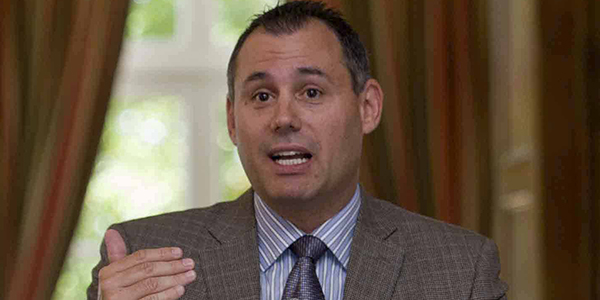Management key in tough economy

The key to profitability in a down economy is management, as in making the tough decisions.
“We can all agree the economy has been less than robust,” said Alan Badey, managing partner with Citrin Cooperman. “But more important than the industry you”™re in is your management. Management is taking the bull by the horns and making the decisions a business needs to.”
Badey spoke at a seminar Sept. 19 at Westchester Country Club in Rye sponsored by Citrin Cooperman, an accounting, tax and consulting agency.
The “Put it into gear” seminar was the second part in a three-part series titled “Driving your business.” The third seminar will be held Dec. 6 at the country club and will address succession planning.
Speakers addressed common pain points and how to maximize profits, how to identify key profit drivers, control expenses and be proactive when it comes to taxes and new health care regulations.
Mark Fagan, a Citrin Cooperman managing partner, said his company doesn”™t just prepare tax returns. What drives the business is practice development, billings, collections, realization and utilization.
Fagan said the most successful businesses right now are the ones that are able to identify five to 10 key drivers, similar to Citrin Cooperman”™s, and then monitor and commit its entire staff to them.
Drivers are what keeps a company profitable and should be used to make daily business decisions, set budgets and track the progression of the company, he said.
Sometimes there can be resistance in adopting drivers, in which case Fagan said it”™s important to prove to everyone how the commitment will improve the business.
“The most successful businesses are the ones that getting the most out of every employee,” he said.
A fast way to increase profits is to reduce costs, argued Tim Kirby, expense reduction analysts director. If a company can reduce costs by 20 percent, it will see a 40 percent increase in net profit, he said.
Expenses, such as a company”™s energy, supplies, telecommunication, taxes and cleaning costs, can get overlooked. Suppliers can get comfortable in their relationships with companies and stop offering their best price.
“Every dollar saved goes directly to your bottom dollar,” Kirby said.
To create competition among suppliers in order to get the best price, Kirby suggested creating a formal request for proposal to alert suppliers that the selection process is competitive. Or a company could sit down with a supplier to discuss ways the business could become a better customer in order to receive a better rate, whether that means changing delivery times or buying more supplies.
When it comes to dealing with state and local taxes, it”™s best to be proactive, said David Seiden, a Citrin Cooperman partner who leads the firm”™s state and local tax practice.
The tax environment has been getting more complex and the possibility for an audit is becoming more likely as states look for additional sources of revenue, Seiden said.
If a company is proactive, it will likely have to spend less time and money preparing for audits and paying penalties.
Cross-border sales tax is commonly a pain point, as businesses may or may not have to register in each state to collect and remit taxes. If a company doesn”™t voluntarily disclose violations, however, the price it pays can be high. Owners can be held personally liable and there is no limit to how far back fees can be assessed if a company has historically been in violation.
With the Affordable Care Act, companies with more than 50 full-time employees will be required to offer affordable insurance by 2014, or face a penalty.
With heavy fines and evolving regulations, it”™s important to begin planning ahead, said Russell Carpentieri, Opus Advisory Group managing director, who manages the firm”™s health care practice.
If a company doesn”™t offer insurance, it will be charged $2,000 per employee, minus the first 30 employees. If the insurance is unaffordable, the company will be charged $3,000 per employee who receives a tax credit.
Plans are classified as unaffordable if the premium costs employees more than 9.5 percent of their income. For instance, if an employee makes $20,000 in W-2 wages, the employee contribution to the premium can”™t exceed $1,950 a year.
Companies that don”™t plan ahead will be damaged, Carpentieri said.